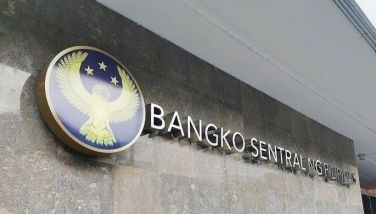Better days ahead for pharma
The Philippines’ pharmaceutical market value will increase from $4.3 billion in 2013 to $8 billion by 2020, at a compound annual growth rate of 9.4 percent, thanks to the country’s high medicine prices, says research and consulting firm GlobalData.
According to the company’s latest report, the Philippines has the third largest pharmaceutical market among the countries in the Association of Southeast Asian Nations (ASEAN), just after Indonesia and Thailand.
Joshua Owide, GlobalData’s director of healthcare industry dynamics, noted that although an increasing disease burden, coupled with prevailing high pharmaceutical prices, are providing the necessary investment incentives for the healthcare market in the Philippines, limited access to healthcare facilities and governmental cuts could yet impede further growth in the future.
Furthermore, public health insurance provider Philippine Health Insurance Corp. does not cover the country’s entire population, resulting in the majority of people being unable to afford medicines, he pointed out.
Owide adds that the government has taken a number of measures to control the high drug prices to very little effect, thanks to the large amount of imported therapies and the demand for costly branded drugs.
Additionally, high spending to overcome basic economic concerns, such as poverty, dependence on imports and high external debt, have left the Philippine government with insufficient funds to finance the development of healthcare infrastructure, according to GlobalData.
The Philippine population is at approximately 99.2 million in 2013, making it the 12th most populated country in the world. Population growth has primarily been due to a high birth rate and rising life expectancy. An increased elderly population is, however, a matter of concern for policy planners, GlobalData said.
According to the study, the positive trend in the healthcare market of the Philippines can be attributed primarily to the following factors: generic substitution in both the public and private sectors, which has been a driver for the manufacture of generic drugs; increased expenditure on medicines by local government units; government initiatives for the prevention and management of chronic diseases; and an improved and updated regulatory environment.
Phl ranks low in open gov’t
Just recently, the World Justice Project (WJP) presented its open government findings for the East Asia & Pacific region at the Open Government Partnership (OGP) Asia-Pacific Regional Conference. The ratings draw from the recently published WJP Rule of Law Index 2014, released in March 2014.
According to the WJP Rule of Law Index 2014, New Zealand led the East Asia & Pacific region in open government performance, with especially high marks for its “right to information†sub-factor score. Japan, Hong Kong, Australia, and the Republic of Korea completed the list of the five best open government performers of the 15 countries assessed by the Index. Myanmar came in 15 out of the 15 countries measured.
Indonesia was ranked seven out of 15 countries in the region for its open government performance, but notably scored first out of 24 countries when compared against income peers (lower middle income countries).
The Philippines ranked only 10th in the region and 55th out of the 99 countries covered by the study, with an open government score of 0.45 (compared to New Zealand’s 0.83).
The WJP Rule of Law Index 2014 relies on over 100,000 household and 2,400 expert surveys to measure how the rule of law is experienced in everyday life around the world. Adherence is assessed using 47 indicators organized around eight themes: constraints on government powers, absence of corruption, open government, fundamental rights, order and security, regulatory enforcement, civil justice, and criminal justice. More than 500 variables are computed to produce these indicators for every country.
Factor 3 (open government) of the WJP Rule of Law Index 2014 assesses the extent to which the society has clear, publicized, accessible, and stable laws; whether proceedings are open to public participation; and whether official information, including drafts of laws and regulations, is available to the public.
According to WJP executive director Juan Carlos Botero, an open government — one that is transparent, accessible, and responsive — is fundamental to establishing the rule of law. He adds that such a government fosters citizens’ participation in decision making, provides access to information, empowers people with tools to hold the government accountable, and ultimately enhances the government’s legitimacy among the population.
For comments, e-mail at [email protected].
- Latest
- Trending

























